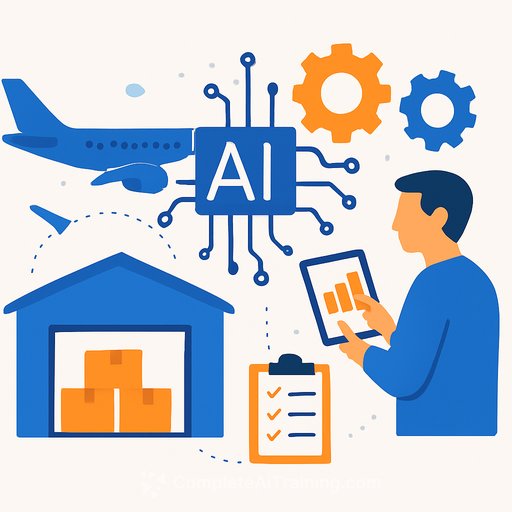Construction's AI Momentum Meets Ops Reality: What Operations Leaders Should Do Now
The 2025 BuiltWorlds AI Benchmarking Report shows a clear signal: interest is high, results are uneven. Nearly two-thirds of firms rate their AI maturity "average" or higher, yet most have not baked AI into core workflows.
For operations leaders, the mandate is simple: target measurable efficiency gains, remove data friction, and build repeatable processes. Here's the state of play and the moves that create value fast.
Where the Industry Stands
- AI maturity: Nearly two-thirds rate themselves "average" or higher; 22% say "above average."
- Strategy posture: 35% are exploring, 33% treat AI as a core focus in specific departments, 27% say it's central to overall strategy, and 4% say it's not strategic.
- Sentiment: 69% excited about AI's potential, 27% cautiously optimistic, 2% skeptical.
Why Operations Is Investing
- Improving operational efficiency and productivity: cited by nearly 100% of respondents.
- Enhancing decision-making: 75%.
- Better project outcomes and risk management: 73%.
- Staying competitive: 73%.
What's Slowing Implementation
- Data privacy and security risks: 62%.
- Limited internal expertise: 58%.
- Data availability and quality issues: 56%.
Practical Moves for the Next 90 Days
- Pick 2 high-friction workflows and run focused pilots (4-8 weeks each). Examples below.
- Set a simple ROI bar: time saved per role per week, rework reduced, RFIs closed faster, safety incidents prevented.
- Create a lightweight AI use policy and approval path for tools and data access.
- Stand up a small "AI in Ops" squad (Ops lead, PM, IT/data, safety/QA). Meet weekly. Kill or scale fast.
- Document what works: prompts, settings, templates, and SOPs so wins repeat across jobsites.
High-ROI Use Cases You Can Deploy Now
- Document control and search: instant retrieval of specs, drawings, submittals, and change history.
- RFI and submittal drafting: first-pass summaries, checklists, and compliance checks to cut cycle time.
- Schedule support: flag logic breaks, resource conflicts, and forecast slippage with variance alerts.
- Photo-based QA/QC: auto-tag punch items, progress verification, and defect spotting from site photos.
- Safety insights: surface leading indicators from incident logs and JSAs to target top risks.
- Cost control: detect anomalies in POs, invoices, and quantities; benchmark production rates.
- Equipment and tool utilization: usage trend alerts and underutilization reports to reduce idle assets.
Data, Security, and Compliance (Make This Non-Negotiable)
- Data readiness: standardize naming, file structures, and metadata in your CDE; enforce version control.
- Access control: least-privilege and project-level segregation; log all model and data access.
- Sensitive data handling: scrub PII, contract terms, and safety incident details before model ingest.
- Model choice: default to enterprise-grade tools with private data isolation and audit trails.
- Governance: adopt practical guardrails from frameworks like the NIST AI Risk Management Framework.
People and Skill Building
- Upskill crews and PMs on prompts, quality checks, and tool SOPs. Keep it job-specific and hands-on.
- Nominate "AI champions" on each major project to collect wins and troubleshoot adoption.
- Refresh job aids monthly: prompt libraries, checklists, and examples that match your templates and forms.
- If you lack in-house expertise, pair external support with a clear handoff plan to your ops team.
Metrics That Prove It's Working
- Hours saved per week per role on document handling, RFIs, and reporting.
- RFI/submittal cycle time reduction and on-time responses.
- Rework reduction and change order clarity.
- Schedule variance caught early and mitigated.
- Safety leading indicators improved (near-miss reporting quality, repeat hazard reduction).
Execution Playbook
- Start with internal data you control and repeatable tasks you can measure.
- Pilot with one project team, then templatize. Deploy to two more projects. Compare KPIs.
- Lock in security and governance early so scaling doesn't stall.
- Share results openly: a short demo and one-page summary beat a long memo.
Next Step
Set one pilot this month with clear KPIs and a 30-day review. Keep the scope tight, document what works, and scale what pays.
If your team needs structured upskilling, explore role-based programs here: AI Courses by Job.
Your membership also unlocks:






